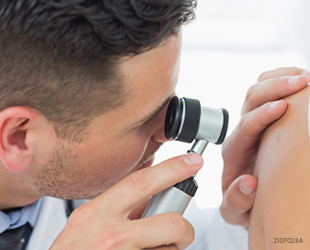A New Type of Gel Shows Promise Against Common Type of Skin Cancer
Remetinostat, a topical therapy that works by inhibiting the expression of cancer-promoting genes, could reduce the need for surgical removal of many subtypes of basal cell carcinoma lesions.

A gel applied to the skin showed signs of effectiveness in patients with basal cell carcinoma (BCC), a common form of skin cancer, according to results from a phase II clinical trial published in Clinical Cancer Research, a journal of the American Association for Cancer Research (AACR).
The therapy could reduce the need for surgical removal of BCC lesions, which can be a costly and burdensome treatment, especially if a patient develops multiple tumors on the skin.
The gel, called remetinostat, works by inhibiting the expression of cancer-promoting genes, scientists explained. Remetinostat is only active in the skin, which may help prevent the types of toxicities associated with therapies that are active throughout the body, they said.
“While further research is needed, our results suggest that remetinostat could be a safe and promising alternative to surgical treatment of BCC due to the high rate of complete responses we observed,” said Kavita Sarin, MD, PhD, senior author of the study and an associate professor of dermatology at Stanford University.
In the clinical trial, patients applied the gel to their tumors three times a day for six weeks. After eight weeks, any remaining tumor was surgically removed and examined under a microscope.
Of the 33 tumors included in the final analysis, 69.7 percent responded to the topical treatment, with 17 complete responses and six partial responses. On average, tumor diameters shrank by approximately 62 percent, and the tumor area dropped by about 71 percent.
One hundred percent of superficial tumors responded to the treatment, as well as 68 percent of the common nodular subtype, and 67 percent of the aggressive infiltrative subtype.
No systemic or serious adverse events were reported. The most frequently reported side effect was an eczema-like skin reaction at the site of remetinostat application.
“Our study also showed remetinostat’s clinical efficacy against nodular BCC, one of the more common BCC subtypes,” Sarin added. “An ideal therapeutic for BCC should treat both nodular and superficial BCCs, and ideally the other subtypes as well.”
Sarin said further study is needed to determine if the effects of the gel are long-lasting.
“If a therapy is to replace surgical treatment, it needs to not only induce a complete response, but also a durable one.” Future trials will examine the longevity of the response to remetinostat, Sarin noted.